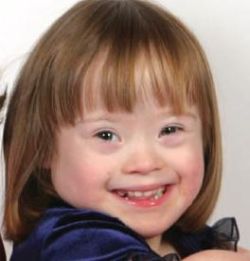 “I just don’t understand,” says a parent bewilderingly, “she’s receiving so many different therapies and tutoring every week, but her scores on educational, speech-language, and psychological testing just keep dropping!”
“I just don’t understand,” says a parent bewilderingly, “she’s receiving so many different therapies and tutoring every week, but her scores on educational, speech-language, and psychological testing just keep dropping!”
I hear a variation of this comment far too frequently in both my private practice as well as outpatient school in hospital setting, from parents looking for an explanation regarding the decline of their children’s standardized test scores in both cognitive (IQ) and linguistic domains. That is why today I wanted to take a moment to write this blog post to explain a few reasons behind this phenomenon.
Children with language impairments represent a highly diverse group, which exists along a continuum. Some children’s deficits may be mild while others far more severe. Some children may receive very little intervention services and thrive academically, while others can receive inordinate amount of interventions and still very limitedly benefit from them. To put it in very simplistic terms, the above is due to two significant influences – the interaction between the child’s (1) genetic makeup and (2) environmental factors.
There is a reason why language disorders are considered developmental. Firstly, these difficulties are apparent from a young age when the child’s language just begins to develop. Secondly, the trajectory of the child’s language deficits also develops along with the child and can progress/lag based on the child’s genetic predisposition, resiliency, parental input, as well as schooling and academically based interventions.
Let us discuss some of the reasons why standardized testing results may decline for select students who are receiving a variety of support services and interventions.
Ineffective Interventions due to Misdiagnosis
Sometimes, lack of appropriate/relevant intervention provision may be responsible for it. Let’s take an example of a misdiagnosis of alcohol related deficits as Autism, which I have frequently encountered in my private practice, when performing second opinion testing and consultations. Unfortunately, the above is not uncommon. Many children with alcohol-related impairments may present with significant social emotional dysregulation coupled with significant externalizing behavior manifestations. As a result, without a thorough differential diagnosis they may be frequently diagnosed with ASD and then provided with ABA therapy services for years with little to no benefit.
Ineffective Interventions due to Lack of Comprehensive Testing
Let us examine another example of a student with average intelligence but poor reading performance. The student may do well in school up to certain grade but then may begin to flounder academically. Because only the student’s reading abilities ‘seem’ to be adversely impacted, no comprehensive language and literacy evaluations are performed. The student may receive undifferentiated extra reading support in school while his scores may continue to drop.
Once the situation ‘gets bad enough’, the student’s language and literacy abilities may be comprehensively assessed. In a vast majority of situations these type of assessments yield the following results:
- The student’s oral language expression as well as higher order language abilities are adversely affected and require targeted language intervention
- The undifferentiated reading intervention provided to the student was NOT targeting actual areas of weaknesses
As can be seen from above examples, targeted intervention is hugely important and, in a number of cases, may be responsible for the student’s declining performance. However, that is not always the case.
What if it was definitively confirmed that the student was indeed diagnosed appropriately and was receiving quality services but still continued to decline academically. What then?
Well, we know that many children with genetic disorders (Down Syndrome, Fragile X, etc.) as well as intellectual disabilities (ID) can make incredibly impressive gains in a variety of developmental areas (e.g., gross/fine motor skills, speech/language, socio-emotional, ADL, etc.) but their gains will not be on par with peers without these diagnoses.
The situation becomes much more complicated when children without ID (or with mild intellectual deficits) and varying degrees of language impairment, receive effective therapies, work very hard in therapy, yet continue to be perpetually behind their peers when it comes to making academic gains. This occurs because of a phenomenon known as Cumulative Cognitive Deficit (CCD).
The Effect of Cumulative Cognitive Deficit (CCD) on Academic Performance
According to Gindis (2005) CCD “refers to a downward trend in the measured intelligence and/or scholastic achievement of culturally/socially disadvantaged children relative to age-appropriate societal norms and expectations” (p. 304). Gindis further elucidates by quoting Satler (1992): “The theory behind cumulative deficit is that children who are deprived of enriching cognitive experiences during their early years are less able to profit from environmental situations because of a mismatch between their cognitive schemata and the requirements of the new (or advanced) learning situation” (pp. 575-576).
So who are the children potentially at risk for CCD?
One such group are internationally (and domestically) adopted as well as foster care children. A number of studies show that due to the early life hardships associated with prenatal trauma (e.g., maternal substance abuse, lack of adequate prenatal care, etc.) as well as postnatal stress (e.g., adverse effect of institutionalization), many of these children have much poorer social and academic outcomes despite being adopted by well-to-do, educated parents who continue to provide them with exceptional care in all aspects of their academic and social development.
Another group, are children with diagnosed/suspected psychiatric impairments and concomitant overt/hidden language deficits. Depending on the degree and persistence of the psychiatric impairment, in addition to having intermittent access to classroom academics and therapy interventions, the quality of their therapy may be affected by the course of their illness. Combined with sporadic nature of interventions this may result in them falling further and further behind their peers with respect to social and academic outcomes.
A third group (as mentioned previously) are children with genetic syndromes, neurodevelopmental disorders (e.g., Autism) and intellectual disabilities. Here, it is very important to explicitly state that children with diagnosed or suspected alcohol related deficits (FASD) are particularly at risk due to the lack of consensus/training regarding FAS detection/diagnosis. Consequently, these children may evidence a steady ‘decline’ on standardized testing despite exhibiting steady functional gains in therapy.
Brief Standardized Testing Score Tutorial:
When we look at norm-referenced testing results, score interpretation can be quite daunting. For the sake of simplicity, I’d like to restrict this discussion to two types of scores: raw scores and standard scores.
The raw score is the number of items the child answered correctly on a test or a subtest. However, raw scores need to be interpreted to be meaningful. For example, a 9 year old student can attain a raw score of 12 on a subtest of a particular test (e.g., Listening Comprehension Test-2 or LCT-2). Without more information, the raw score has no meaning. If the test consisted of 15 questions, a raw score of 12 would be an average score. Alternatively, if the subtest had 36 questions, a raw score of 12 would be significantly below-average (e.g., Test of Problem Solving-3 or TOPS-3).
Consequently, the raw score needs to be converted to a standard score. Standard scores compare the student’s performance on a test to the performance of other students his/her age. Many standardized language assessments have a mean of 100 and a standard deviation of 15. Thus, scores between 85 and 115 are considered to be in the average range of functioning.
Now lets discuss testing performance variation across time. Let’s say an 8.6 year old student took the above mentioned LCT-2 and attained poor standard scores on all subtests. That student qualifies for services and receives them for a period of one year. At that time the LCT-2 is re-administered once again and much to the parents surprise the student’s standard scores appear to be even lower than when he had taken the test as an eight year old (illustration below).
Results of The Listening Comprehension Test -2 (LCT-2): Age: 8:4
| Subtests | Raw Score | Standard Score | Percentile Rank | Description |
| Main Idea | 5 | 67 | 2 | Severely Impaired |
| Details | 2 | 63 | 1 | Severely Impaired |
| Reasoning | 2 | 69 | 2 | Severely Impaired |
| Vocabulary | 0 | Below Norms | Below Norms | Profoundly Impaired |
| Understanding Messages | 0 | <61 | <1 | Profoundly Impaired |
| Total Test Score | 9 | <63 | 1 | Profoundly Impaired |
(Mean = 100, Standard Deviation = +/-15)
Results of The Listening Comprehension Test -2 (LCT-2): Age: 9.6
| Subtests | Raw Score | Standard Score | Percentile Rank | Description |
| Main Idea | 6 | 60 | 0 | Severely Impaired |
| Details | 5 | 66 | 1 | Severely Impaired |
| Reasoning | 3 | 62 | 1 | Severely Impaired |
| Vocabulary | 4 | 74 | 4 | Moderately Impaired |
| Understanding Messages | 2 | 54 | 0 | Profoundly Impaired |
| Total Test Score | 20 | <64 | 1 | Profoundly Impaired |
(Mean = 100, Standard Deviation = +/-15)
However, if one looks at the raw score column on the far left, one can see that the student as a 9 year old actually answered more questions than as an 8 year old and his total raw test score went up by 11 points.
The above is a perfect illustration of CCD in action. The student was able to answer more questions on the test but because academic, linguistic, and cognitive demands continue to steadily increase with age, this quantitative improvement in performance (increase in total number of questions answered) did not result in qualitative improvement in performance (increase in standard scores).
In the first part of this series I have introduced the concept of Cumulative Cognitive Deficit and its effect on academic performance. Stay tuned for part II of this series which describes what parents and professionals can do to improve functional performance of students with Cumulative Cognitive Deficit.
References:
- Bowers, L., Huisingh, R., & LoGiudice, C. (2006). The Listening Comprehension Test-2 (LCT-2). East Moline, IL: LinguiSystems, Inc.
- Bowers, L., Huisingh, R., & LoGiudice, C. (2005). The Test of Problem Solving 3-Elementary (TOPS-3). East Moline, IL: LinguiSystems.
- Gindis, B. (2005). Cognitive, language, and educational issues of children adopted from overseas orphanages. Journal of Cognitive Education and Psychology, 4 (3): 290-315.
- Sattler, J. M. (1992). Assessment of Children. Revised and updated 3rd edition. San Diego: Jerome M. Sattler.


 Assessing speech-language abilities of children with genetic disorders and developmental disabilities is no easy feat. Although developmental and genetic disorders affecting cognition, communication and functioning are increasingly widespread, speech-language assessment procedures for select populations (e.g., Down Syndrome) remain poorly understood by many speech-language professionals, resulting in ineffective or inappropriate service provision.
Assessing speech-language abilities of children with genetic disorders and developmental disabilities is no easy feat. Although developmental and genetic disorders affecting cognition, communication and functioning are increasingly widespread, speech-language assessment procedures for select populations (e.g., Down Syndrome) remain poorly understood by many speech-language professionals, resulting in ineffective or inappropriate service provision. 
 Once again I am joining the ranks of SLPs who are
Once again I am joining the ranks of SLPs who are  Today’s guest post on genetic syndromes comes from Rachel Nortz, who is contributing a post on the Down Syndrome.
Today’s guest post on genetic syndromes comes from Rachel Nortz, who is contributing a post on the Down Syndrome.